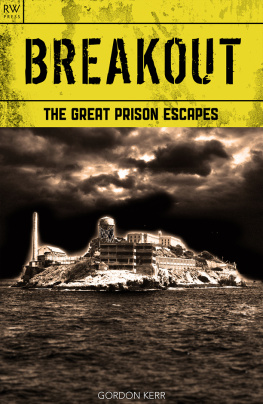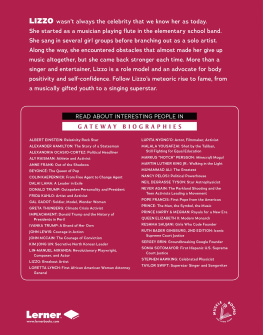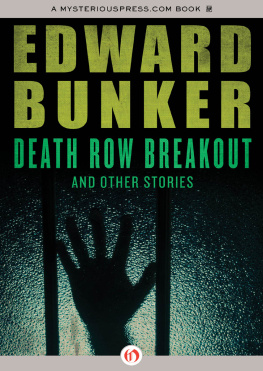

2012 RW Press Ltd
This 2012 edition published by RW Press Ltd
All rights reserved. No part of this publication may be reproduced, stored in a retrieval system, or transmitted in any form or by any means, electronic, mechanical, photocopying or otherwise, without the prior permission, in writing, of the publisher.
The views expressed in this book are those of the author but they are general views only, and readers are urged to consult a relevant and qualified specialist for individual advice in particular situations. The author and RW Press Ltd hereby exclude any liability to the extent permitted by law, for any errors or omissions in this book and for any loss, damage and expense (whether direct or indirect) suffered by a third party relying on any information contained in this book.
Although every effort has been made to trace and contact people mentioned in the text for their approval in time for publication, this has not been possible in all cases. If notified, we will be pleased to rectify any alleged errors or omissions when we reprint the title.
ISBN: 9781909284289
RW Press Ltd
RWPress@live.co.uk
Contents
Introduction
As the famous line in the song Me and Bobby McGhee says, Freedoms just another word for nothing left to lose, and many of the men featured in Breakout: Infamous Prison Escapes , had nothing left to lose. When the prison doors clanged shut behind them, they had indeed lost everything and were left with nothing, apart from some stark choices. Either they could resign themselves to long years behind bars or behind the razor wire of a prisoner of war camp, or they could develop the steely determination, cultivate the mental focus and begin the meticulous planning needed to arrive at the momentous day when they would finally breakout and breathe the sweet air of freedom once again.
No suspicions could be raised, no hint given, that a hole was being gouged out of a ceiling, as in the case of serial killer Ted Bundy when he escaped from his Colorado cell an escape that led to his freedom, but also brought more murders. At both Alcatraz and in jailed drug smuggler Billy Hayes Turkish prison, for example, saw-marks were cleverly disguised with grease, polish or ash-covered putty saw marks that would surely arouse the guards suspicions. Deception such as that takes confidence, however, like that displayed by notorious American bank robber John Dillinger who sculpted a handgun from a piece of wood and used it to get out of Crown Point prison in Indiana.
Escape-proof Prison
Crown Point had been built to be escape-proof, but no sooner had someone described a prison as such that an inmate would devise a plan to prove them wrong. At Stalag Luft III in Germany during World War II, the Germans went to extremes to ensure that their prisoners remained in captivity, even installing dozens of seismographic microphones around the camp perimeter to deter tunnelling. However, in this instance, their measures still failed to prevent the escape of 76 prisoners one March night in 1944.
Perhaps, the term escape-proof can be applied to only one prison the daunting rock in the middle of San Francisco Bay known simply as Alcatraz. Of the 36 men who attempted to escape from the Rock during its time as the home for Americas most dangerous men, only three are still unaccounted for. Did they make it? No one knows for sure, but it seems likely that, despite their admirable ingenuity and undoubted courage, they died in the treacherous currents of the bay the night they escaped.
Such escapes are not undertaken lightly. Recapture often means greater vigilance by guards and harsher conditions often ensue. Therefore, it takes meticulous, detailed planning and great ingenuity to get out of prison. Legendary lover Casanova carefully planned his escape from the Piombi prison in Venice, and spy George Blakes escape was planned with the help of a walkie-talkie smuggled into jail in the days before mobile phones.
Of course, the desire for freedom can bring powerful emotions and dramatic actions. The ruthless group of men known as the Texas Seven, facing lengthy sentences of between 30 years to life, had nothing to lose when they broke out of the John B. Connally Unit in Texas. They were on the run for several months, sticking together like a football team on the road whilst carrying out robberies to support their lives as fugitives.
Alfie Hinds
British small-time criminal Alfie Hinds became one of the most famous faces in Britain during the 1950s due to his repeated prison breaks. However, Alfie did not escape merely to breathe the air of freedom; he escaped because he believed he should not have been sent to prison in the first place. His escapes were attempts to draw attention to the fact that a terrible injustice had been done. On the run, he wrote to MPs and newspapers. He even gave an interview to one paper. Eventually, he won the day, but he lost a period of his life in doing so.
Some people seem to just enjoy the thrill of it all. Jack Sheppard, the 18 th -century criminal, enjoyed breaking the law to the extent that he often gave all of his ill-gotten gains to the person with whom he was working. He liked nothing more than to escape from perilous situations and became famous for seemingly being able to get out of any prison, even when chained to a huge metal staple in the floor of his cell. Sadly, in the end, Jack was unable to escape the hangmans noose and the career of one of historys most colourful rogues was brought to a sorry end on the gallows at Tyburn.
Some, of course, have broken free from incarceration for far more noble reasons. It is hard to imagine that there was a prison that could hold a man as remarkable as Dieter Dengler, an American pilot who escaped from the North Vietnamese in 1965 and survived in the impenetrable jungle for three weeks, living on what he could find to eat and fighting off the deadly creatures that surrounded him.
Dengler was a very determined individual and determination is a pre-requisite for escape but so too is ingenuity. Few can have been as determined or as ingenious as the prisoners of war held at Stalag Luft III in 1944. The work that went into the building of three tunnels is incredible, given that air pumps had to be made and structural problems solved, but the creation of identity cards, travel passes and civilian clothing with the limited resources that were available to them is staggering. That so many died as a result of such an audacious plan is a tragedy.
Ignoble Ambitions
Ted Bundy escaped so that he could get back to the business of killing, and other criminals had similar ignoble ambitions. Prison for John Dillinger was a criminal finishing school, providing him with an opportunity to learn from masters of the criminal arts men such as Homer Van Meter and Walter Dietrich. Following Dillingers release, he helped his mentors to break out. Having been re-arrested shortly after, he escaped and returned to his life of robbery and murder. They travelled the country, robbing banks, taking hostages and creating mayhem everywhere they went. But men such as those rarely stay far enough ahead of their pursuers and all of them, including the seemingly indestructible Dillinger, ended up dead in a shooting, dead in the electric chair or behind bars for the rest of their natural life.


















